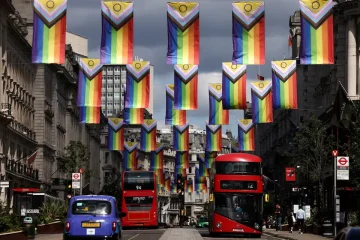VILIANT RICHEY
WHEN the violence she was suffering at home escalated during the lockdown, Maria (not her real name) decided to make the gut-wrenching decision to leave. But instead of finding freedom, she ended up in the hands of traffickers, isolated and with no documents, in a factory of a foreign country. This case, recently reported to my team by a Ukrainian NGO, is but one example of the hidden consequences that COVID-19 has had on human trafficking.
Since the outbreak of the pandemic and the worldwide onset of lockdown measures, numerous countries reported a sharp decline in ‘traditional’ crimes – murders, burglaries, thefts, street fights – owing to the stay-at-home measures that fundamentally altered the environment in which these criminal activities take place. But while these more visible crimes witnessed a decline, other crimes increased dramatically, adapting to and flourishing in the new environment, while remaining “invisible” to most.
Though the conditions for such invisible crimes existed long before the pandemic hit, the combination of the current economic crisis and home-confinement has pushed millions of people into positions of vulnerability, limiting access to secure jobs, support services, and even childcare. In times when new lockdown measures have been imposed in many countries, it is imperative not to turn a blind eye to exploitation, no matter how uncomfortable it is.
As highlighted by the case above, one example of invisible crime is domestic violence and abuse, which has reportedly increased by 30% during the pandemic both globally and in Europe. Domestic violence feeds off gender inequality, strained institutions, and insufficient victim protection—all of which have been exacerbated by the pandemic. Since it is also a proven push factor in trafficking of women and girls, the increase of one crime risks accelerating another.
Online child exploitation is the most extreme example of invisible crime. Data show that even before the pandemic, between 2014 and 2018, reports of child sexual exploitation materials went from one million to 18.4 million consisting of over 45 million photos and videos of children being abused. Recent reports have documented how tech companies have consistently failed to identify, report, or take down the illegal content from their platforms. Amid the pandemic, the rate of prosecution of those responsible for producing and distributing this content plunged by 90%, as investigations slowed, courts closed, and resources were re-deployed.
The result? Law enforcement agencies are reporting that, since the beginning of the pandemic, the already high number of produced and exchanged online child sexual exploitation materials globally has tripled. A compounding of system failures has given predators the impunity to take advantage of worldwide school closures to find, groom, and exploit more isolated and less supervised children. In a society where children cannot be safe in their own homes, something is fundamentally broken.
Other invisible crimes are also reportedly on the rise. Higher vulnerability has led to an increase in some forms of human trafficking – such as trafficking for pornography production or forced criminality where individuals are exploited by organized criminal groups and forced to commit crimes like the production, transport and selling of drugs.
Accounts from law enforcement agencies and civil society organizations reinforce the conclusion that without urgent and targeted action, this health and economic crisis risks becoming a hidden yet rapidly growing human trafficking crisis, putting many more lives and the cohesion of our societies at risk.
Though the pandemic ushered certain crimes away from our streets, the global lockdown measures it brought unintentionally but devastatingly resulted in a multiplying force for the rise of invisible crimes like domestic abuse, child exploitation and various forms of human trafficking. Yet, being “invisible” doesn’t make the harm any less real. It means we need to look harder and in the right places for these crimes. We must have the courage to truly see and acknowledge the ‘invisible’ – yet pervasive – reality of human exploitation.
Ultimately, combating human trafficking requires significant investment in protection and prevention initiatives so that the vulnerable of today do not become victims tomorrow. – Thomson Reuters Foundation.
Valiant Richey is the OSCE Special Representative and Co-Ordinator for Combating Trafficking in Human Beings.














